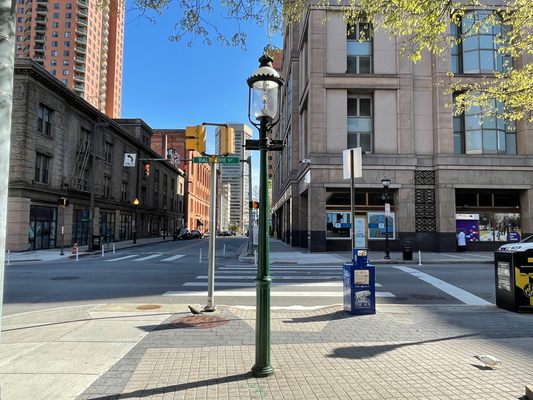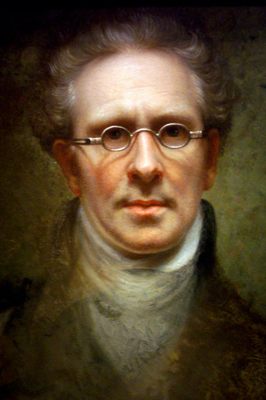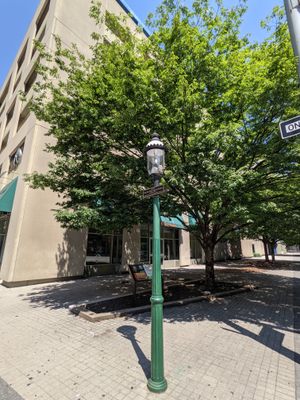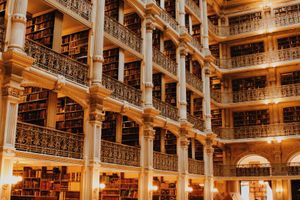About
Although Newport, Rhode Island, rightfully claims to be home to the first gas street light in the United States, Baltimore upped the game when the Maryland city established the first public gas utility in 1816. A few months later, on February 7, 1817, Baltimore installed and lit its first gaslight on North Holliday and East Baltimore Streets. Newport lit a residence; Baltimore intended to light a city!
The brain behind illuminating Baltimore with gas was prominent American portraitist Rembrandt Peale, who is best known for his paintings of founding fathers George Washington and Thomas Jefferson. In 1814, he opened Peale’s Baltimore Museum and Gallery of Fine Arts on North Holliday Street. Here, he displayed his own artwork as well as other items of natural and scientific interest, including a fully-assembled mastodon skeleton.
In 1816, having acquired a patent for gas lighting, Peale decided to illuminate his museum. Lighting the museum and gallery captured the public’s attention and permitted Peale to admit paying guests during the evening hours. People were so mesmerized by the indoor lighting that they paid a separate museum admission fee just to see Peale’s lighting demonstration. As he hoped, the attention generated by the museum’s nighttime lighting attracted investors to his newly-formed Gas Light Company of Baltimore. Less than a year later, the lamp at East Baltimore and North Holliday was lit.
Baltimore’s street lamps were also the first fueled with manufactured gas, which Peale produced by distilling wood and tar behind the museum. Peale eventually parted ways with the Gas Light Company. However, the city remained brighter for his vision, and gas continued to illuminate the streets of Baltimore until the switch to electric lighting in 1957. Baltimore's last gas street light was extinguished in August of that year.
In 1991, Baltimore Gas & Electric placed a replica of the first street lamp at the original corner location to commemorate its 175th-anniversary. The glass and metal lantern reproduces the 1817 design but is now lit by natural gas. Utility officials believe the green fluted iron pipe that holds the lantern to be the original upright. A bronze plaque beneath the lantern denotes it (somewhat inaccurately) as the “First Gas Street Lamp In America.”
Related Tags
Community Contributors
Added By
Published
May 17, 2021
Sources
- https://jeffersonpatterson.wordpress.com/2018/09/13/gas-lighting-in-baltimore-19th-century-style/
- https://americangaslamp.com/blog/recognizing-the-first-gas-street-lamp-in-america/?srsltid=AfmBOopGwPqaAG_mPdvRqWciW8S3HRaOKDpRcpCUy185YM7TZYwiqBdU
- https://americangaslamp.com/blog/recognizing-first-gas-street-lamp-america




















































